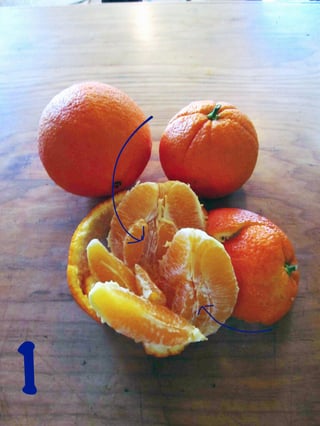Sometimes after peeling your orange, you notice that there are also some underdeveloped segments inside it (figure 1), or at its base (figure 2).
What do you call these tiny, underdeveloped segments, which are shown by arrows in these pictures, in (casual) English?
In Persian, we casually call them the "orange's baby". Like:
"Oh, look! My orange has babies too."
I just could find that type 2 is seen in navel orange as an underdeveloped twin fruit.


